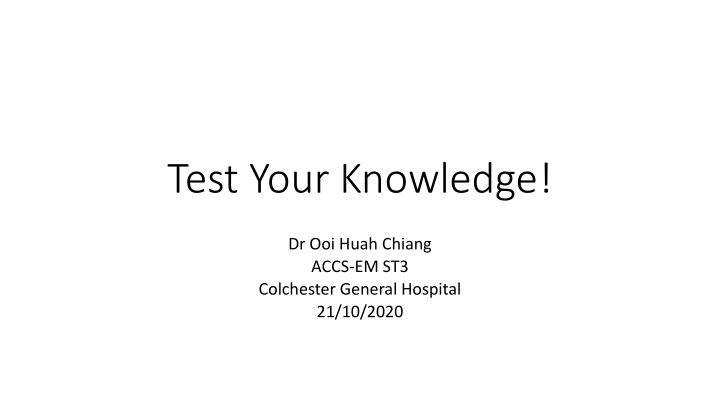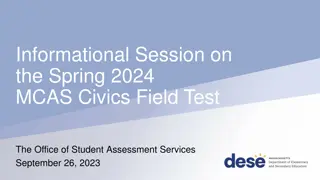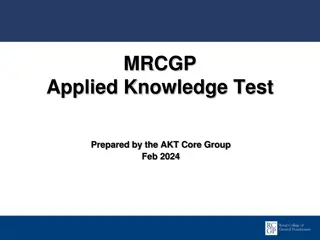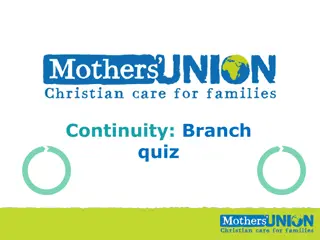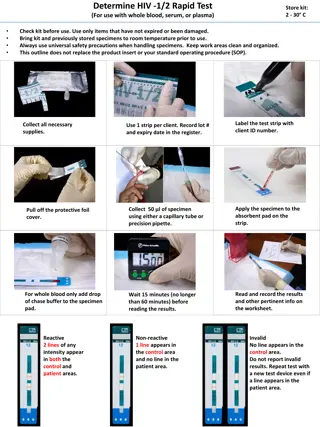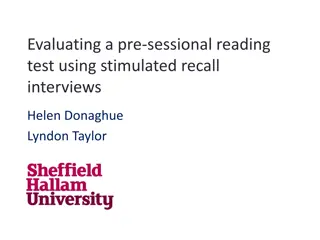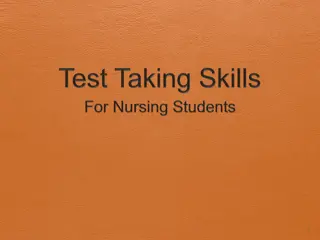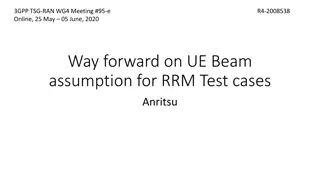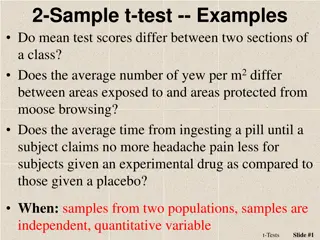Test Your Knowledge
Enhance your medical knowledge with FRCEM Primary Single-Best Answer questions focused on applied basic science topics like Anatomy, Physiology, Pharmacology, Microbiology, Pathology, and EBM/Statistics. Test scenarios include scenarios of thoracic outlet syndrome, carotid sinus location, and lymph node enlargement related to dental abscesses.
Download Presentation

Please find below an Image/Link to download the presentation.
The content on the website is provided AS IS for your information and personal use only. It may not be sold, licensed, or shared on other websites without obtaining consent from the author.If you encounter any issues during the download, it is possible that the publisher has removed the file from their server.
You are allowed to download the files provided on this website for personal or commercial use, subject to the condition that they are used lawfully. All files are the property of their respective owners.
The content on the website is provided AS IS for your information and personal use only. It may not be sold, licensed, or shared on other websites without obtaining consent from the author.
E N D
Presentation Transcript
Test Your Knowledge! Dr Ooi Huah Chiang ACCS-EM ST3 Colchester General Hospital 21/10/2020
FRCEM Primary 180 Single-Best Answer Questions on applied basic science Blueprint: Anatomy x60 Physiology x60 Pharmacology x27 Microbiology x18 Pathology x9 EBM/Statistics x6
Q1 - A 25 year old presents after a skateboarding injury, where he had struck his right shoulder. On X-ray you find a displaced fracture of the clavicle and an incidental finding of a cervical rib. On examination, you note that at times when he rotates his head to look right, he has a pale, cold right hand with prolonged capillary refill time of the fingers. Which vessel is likely to be compressed? A. Arch of aorta B. Subclavian artery C. Axillary artery D. Brachial artery E. Radial artery
Explanation The patient has features of thoracic outlet syndrome with compression of the subclavian artery, which is often found in patients with a cervical rib, and rarely in displaced clavicle fractures. The examination finding describes Adson's sign, where rotation of the head to towards the side of compression causes more subclavian artery compression. It is not a reliable sign and is seen in normal individuals. By BruceBlaus - Own work, CC BY-SA 4.0, https://commons.wikimedia.org/w/index.php ?curid=46636557
Q2 - You are in resus managing a 23-year old female with a supraventricular tachycardia (SVT). Adenosine is being prepared, whil you attempt a carotid sinus massage. At which level is the carotid sinus typically located? A. Angle of the jaw B. Hyoid bone C. Thyroid cartilage D. Cricoid cartilage E. Above the clavicle
Explanation The carotid sinus is located just above the carotid bifurcation Landmark: Superior border of thyroid cartilage Landmark 2: C4 (same as carotid bifurcation) Contains baroreceptors; innervated by CNIX NB Carotid body is a different structure with different functions
Q3 - You attend a patient with a painful jaw swelling you suspect to be caused by a dental abscess from the lower 1st molar tooth. Which lymph node is likely to be enlarged first? A. Cervical B. Pre-auricular C. Postauricular D. Submandibular E. Submental
Explanation - lymphatics of neck Not shown are: - Submental nodes - Postauricular nodes - Occipital nodes
Q4 - A 70 year old man has been complaining of worsening neck pain over many months, and has now developed shooting pains down his right arm. On examination, you note a loss of sensation over the supraclaviular fossa. Which dermatome does this area correspond with? A. C2 B. C3 C. C4 D. C5 E. C6
Explanation There is often significant overlap of dermatomes in clinical practice A commonly used map is the ASIA chart, which describes each corresponding dermatome and myotome. List also available on wikipedia
Q5 - You notice the elevated jugular venous pressure of a 63-year-old male patient who has presented with progressive bilateral leg swelling. You suspect right heart failure. What is the normal systolic pressure in the right ventricle? A. 0-3 mmHg B. 8-10 mmHg C. 15-30 mmHg D. 80-120 mmHg E. 100-140 mmHg
Explanation The diagram shows normal pressures in each chamber Another diagram you should familiarise yourself with is Wiggers diagram
Q6 - A parent has brought their 2-year old daughter who had swallowed a coin. The X-ray shows a hyperdense foreign body lodged in the proximal oesophagus in the neck. What structure contributes to the narrowing at this level? A. Cricopharyngeus muscle B. Cricoid cartilage C. Lordosis of the cervical spine D. Thyroid gland E. Tracheal rings
Explanation The 3 narrowest points of the oesophagus (where foreign bodies most commonly lodge) are: Upper oesophageal sphincter controlled by the cricopharyngeus muscle Mid-oesophagus where the aortic arch indents Lower oesophageal junction where there is a physiological sphincter Note: The other narrowing in the gut to look for foreign bodies is the ileocaecal valve
Q7 - A 33-year old male presents to you with a neck lump, constantly feeling hot despite it being late fall and mild tachycardia. You suspect thyrotoxicosis. Which of the following statements regarding thyroid hormone is true? A. Thyroxine (T4) is more hormonally active than triiodothyronine (T3) B. T4 is synthesised from T3 in the thyroid gland C. Propranolol blocks conversion of T4 to T3 in blood D. Thyroid-stimulating hormone is secreted by the posterior pituitary gland E. Thyroid hormones exert their cellular effects via tyrosine kinase receptors
Explanation T3 and T4 are both active hormones, but T3 is much more effective, but has a shorter half-life T4 is synthesised from 2 T2s, and T3 is synthesised from T2+T1 Propranolol in thyrotoxicosis has many effects, including blocking T4 to T3 conversion in plasma TSH is secreted by anterior pituitary gland Thyroid hormones are made of tyrosine, but act on cells via nuclear receptors
Q8 - A patient reports abdominal pain and yellow discoloration of the eyes and skin after being started on an antibiotic for a chest infection. Which of the following is the likely antibiotic? A. Amoxicillin B. Co-amoxiclav C. Clarithromycin D. Doxycycline E. Chloramphenicol
Explanation Co-amoxiclav is known to cause cholestatic jaundice Erythromycin is also known to cause this, but not clarithromycin Doxycycline is known to cause yellowing of the teeth, especially in children <8 years old.
Q9 - A 19-year-old female student presents to you with a sore throat and fever for 2 weeks. She has just started dating a fellow student at her college. Examination reveals bilateral cervical lymphadenopathy and hepatosplenomegaly. What is the likely causative organism? A. Human immunodeficiency virus (HIV) B. Hepatitis B C. Hepatitis C D. Epstein-barr virus E. Cytomegalovirus
Explanation The clinical picture suggests infectious mononucleosis Caused by EBV (aka human herpesvirus 4) IM commonly affects young adults and demonstrates more classical features of cervical/axillary lymphadenopathy and hepatosplenomegaly Treatment is supportive, and using amoxicillin classically causes a rash Be mindful of splenic rupture, especially with trauma
